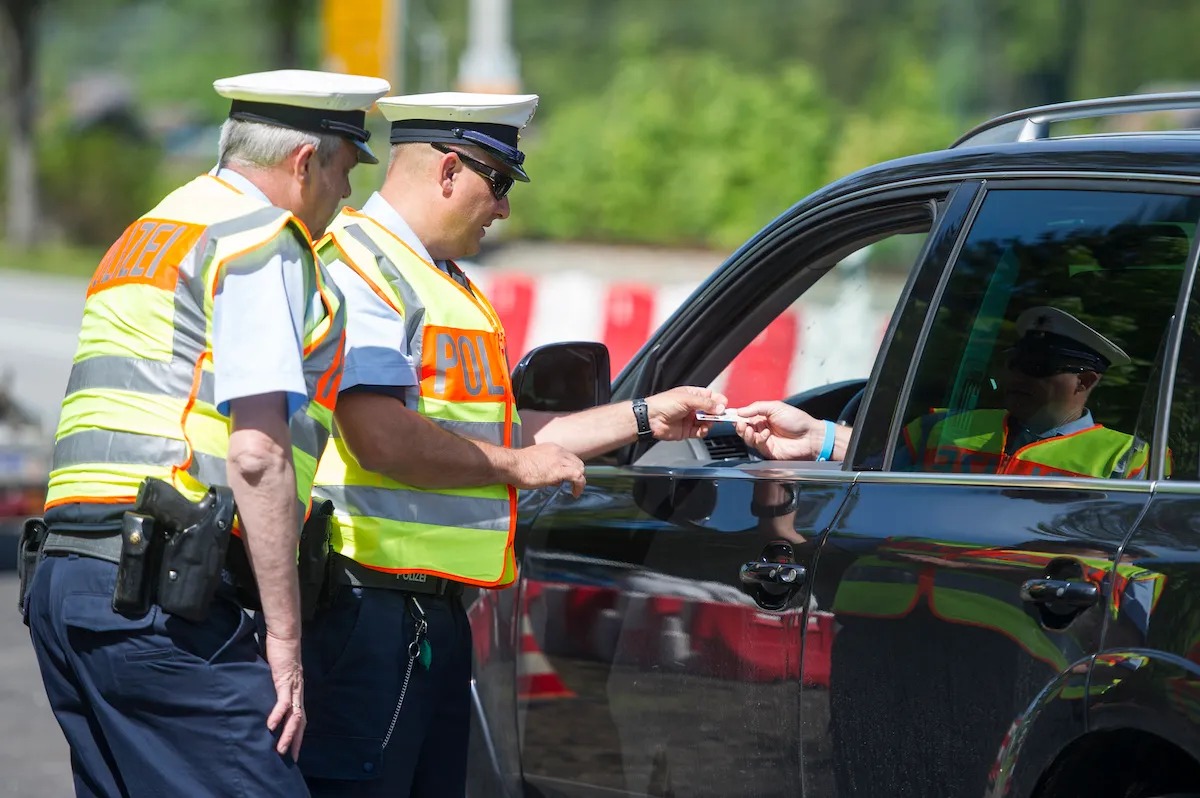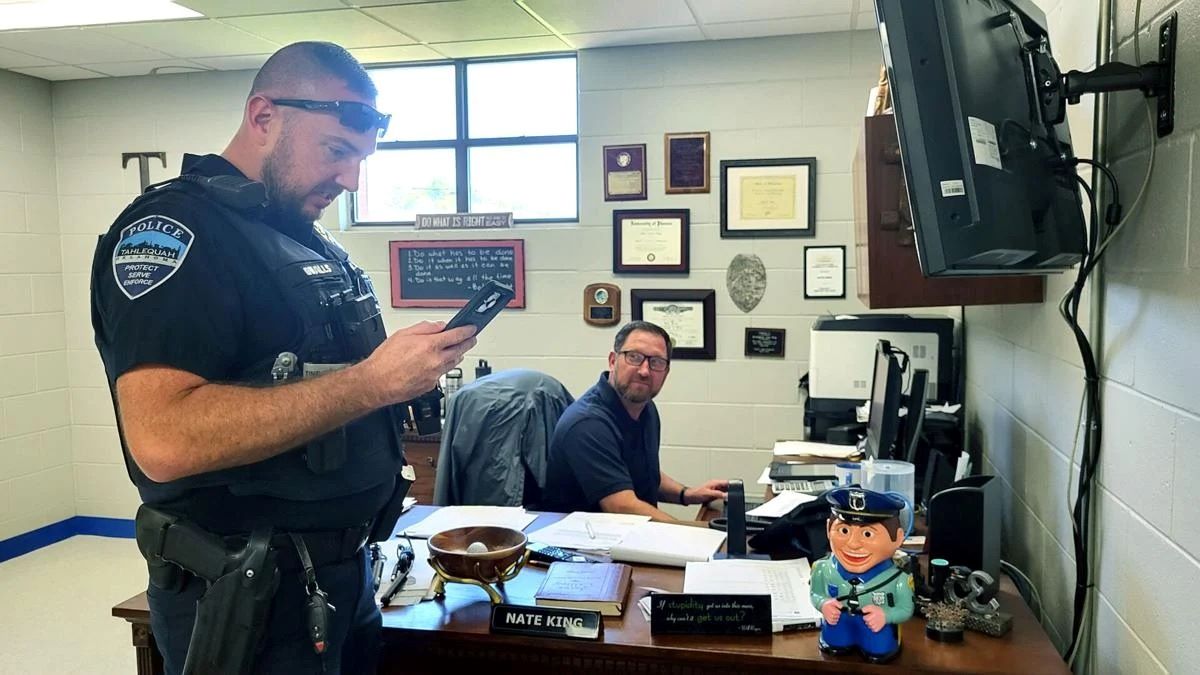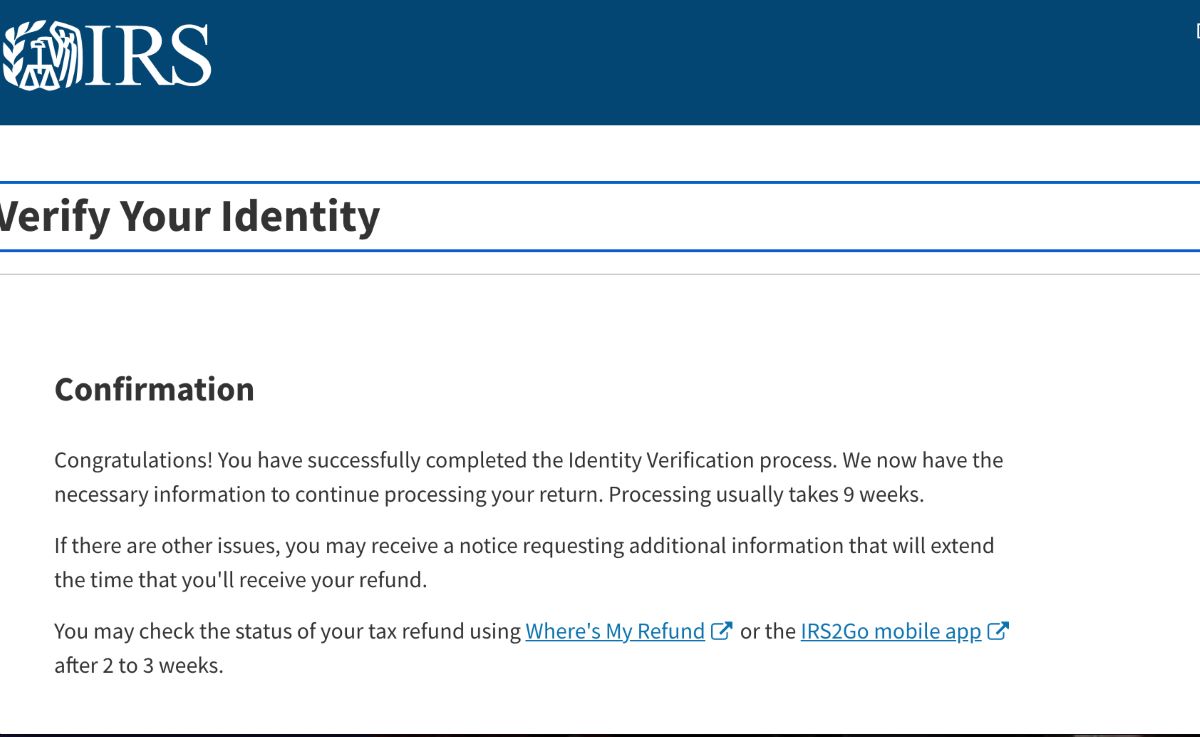

Finance
How Do Police Verify Insurance
Published: November 22, 2023
Discover how police verify insurance information and the importance of having adequate coverage. Trust our experts in finance to guide you through the process.
(Many of the links in this article redirect to a specific reviewed product. Your purchase of these products through affiliate links helps to generate commission for LiveWell, at no extra cost. Learn more)
Table of Contents
Introduction
Insurance verification plays a crucial role in ensuring the safety and protection of individuals on the road. Police officers are responsible for verifying that drivers have valid insurance coverage when operating a vehicle. This important task helps to reduce the number of uninsured motorists and promotes a safer driving environment. But how do police officers actually verify insurance?
In this article, we will explore the methods used by law enforcement agencies to confirm insurance coverage, the challenges they face, and the consequences drivers may face for not having valid insurance.
Insurance verification is necessary because driving without insurance is illegal in most jurisdictions. It poses significant financial risks to the driver and other road users in the event of an accident. Without proper insurance, individuals may be unable to cover the costs of property damage and medical expenses, resulting in financial hardships and potential lawsuits.
Let’s delve into the methods employed by police officers to verify insurance coverage and ensure the safety of our roads.
Methods of Insurance Verification
Police officers employ various methods to verify insurance coverage when encountering drivers on the road. These methods help ensure compliance with legal requirements and promote road safety. Here are the commonly used approaches:
- Requesting Proof of Insurance: One of the most direct methods of verification is for police officers to request proof of insurance from drivers during routine traffic stops. Drivers are typically required to carry their insurance card or a digital copy of it as proof of coverage. Police officers can inspect the document to ensure it meets the necessary requirements, such as the policy number, vehicle information, and valid dates. They may also verify the authenticity of the document by cross-referencing it with the insurance company.
- Calling the Insurance Provider: In cases where drivers don’t have physical proof of insurance or there are discrepancies with the documentation, police officers have the option to call the insurance provider directly. By contacting the insurance company, officers can confirm the driver’s coverage, policy details, and validate the policy’s current status. This method helps prevent fraudulent or expired insurance information from being presented during a traffic stop.
- Utilizing Law Enforcement Databases: Police officers have access to law enforcement databases that store information about registered vehicles and their associated insurance coverage. These databases allow officers to quickly verify insurance status based on the vehicle’s identification number (VIN) or license plate. This method provides a more efficient way of checking insurance coverage, particularly in situations where physical proof is not readily available.
By utilizing these methods, police officers can ensure drivers have valid insurance coverage, thereby promoting road safety and protecting individuals from the potential financial burden of accidents.
Requesting Proof of Insurance
One of the primary methods that police officers use to verify insurance coverage is by requesting proof of insurance from drivers during routine traffic stops. This method allows officers to physically inspect the documentation provided by the driver to ensure it meets the necessary requirements.
When a driver is pulled over, the officer will typically ask for their driver’s license, vehicle registration, and proof of insurance. The driver is expected to provide their insurance card, which contains essential information such as the policy number, the name of the insurance company, policy effective dates, and vehicle information. In some cases, drivers may opt to present a digital copy of their insurance card stored on their mobile device.
The police officer will carefully examine the insurance card to verify its legitimacy. They will cross-check the details on the card with the vehicle information and the driver’s identification information to ensure everything is in order. The officer will also confirm that the policy is active and has not expired.
In situations where the driver fails to provide proof of insurance or presents insufficient or expired documents, the officer may take further steps to verify insurance coverage, such as contacting the insurance provider for confirmation.
It’s important for drivers to understand the legal requirement of carrying proof of insurance while operating a vehicle. Failing to provide valid insurance documentation can result in penalties and fines. Therefore, it’s advised for drivers to have their insurance cards readily accessible and up to date to avoid any complications during a traffic stop.
Calling the Insurance Provider
When drivers are unable to provide physical proof of insurance or if there are discrepancies with the documentation presented, police officers have the option to contact the insurance provider directly for verification. This method allows officers to confirm the driver’s insurance coverage, policy details, and validate the current status of the policy.
Upon encountering a driver without proof of insurance or with questionable documentation, the police officer will ask for the driver’s consent to contact their insurance company. The officer will typically make the call using their department-issued mobile device or through the dispatch center.
During the call, the officer will provide the necessary information, such as the driver’s name, policy number (if available), vehicle details, and potentially the driver’s identification information. The insurance company representative will then verify the given information and provide the officer with confirmation of insurance coverage status.
This method of verification not only helps rule out any potential fraudulent or expired insurance documents but also provides more accurate and up-to-date information. It eliminates the possibility of misinterpretation or alteration of physical proof of insurance.
Calling the insurance provider also allows officers to address any concerns or discrepancies in real-time. For example, if the driver claims to have recently made a payment or updated their policy, this can be verified by speaking directly with the insurer. Additionally, if the officer discovers that the policy has been cancelled or is invalid, appropriate actions can be taken, such as issuing a citation or impounding the vehicle, depending on local laws and regulations.
It is worth noting that while the officer may ask for permission to contact the insurance company, drivers are generally not obligated to provide consent. However, refusing consent or providing false insurance information can have legal ramifications, and the officer may employ other methods of verification, such as utilizing law enforcement databases.
Overall, calling the insurance provider is a valuable method for police officers to confirm insurance coverage, ensuring the safety and compliance of drivers on the road.
Utilizing Law Enforcement Databases
Law enforcement agencies have access to databases that store information about registered vehicles and their associated insurance coverage. These databases serve as a valuable resource for police officers when verifying insurance during traffic stops or other encounters with drivers.
When encountering a driver without physical proof of insurance or in situations where further verification is necessary, police officers can utilize law enforcement databases to quickly access insurance information. This method allows officers to check the insurance status of a vehicle based on its identification number (VIN) or license plate.
The databases contain up-to-date information provided by insurance companies and relevant authorities. By entering the vehicle’s VIN or license plate number into the database, officers can retrieve details such as the insurance company name, policy number, and policy effective dates. This information helps confirm if the driver has valid insurance coverage at the time of the encounter.
Utilizing law enforcement databases offers several advantages. Not only does it save time during traffic stops, but it also provides a reliable source of information that minimizes the chance of human error or fraudulent documentation. Additionally, it ensures that officers have access to the most current insurance information, particularly in cases where drivers may present expired or counterfeit insurance documents.
It is important to note that the use of law enforcement databases for insurance verification is subject to strict protocols and security measures. Access to these databases is restricted to authorized personnel, and it is essential that officers adhere to departmental guidelines and legal requirements when utilizing this method.
However, it is worth mentioning that law enforcement databases may not be available in all jurisdictions or for all law enforcement agencies. The availability and scope of these databases vary depending on local laws and resources.
Overall, the use of law enforcement databases is a valuable tool that helps police officers verify insurance coverage efficiently and accurately, enabling them to enforce compliance with insurance regulations and maintain safer roads for everyone.
Verifying Insurance during Traffic Stops
Traffic stops provide police officers with a prime opportunity to verify insurance coverage for drivers on the road. During these encounters, officers have the authority to request proof of insurance and confirm its validity using various methods.
When conducting a traffic stop, police officers typically begin by asking the driver for their driver’s license, vehicle registration, and proof of insurance. The proof of insurance can be presented as a physical card or a digital copy on a mobile device. Officers will carefully examine the documentation, checking for essential details such as the policy number, effective dates, and vehicle information.
If the driver provides physical proof of insurance, the officer will review the document to ensure it meets the necessary requirements and matches the vehicle and driver information. In cases where electronic proof is presented, officers may request the driver to navigate to the specific insurance app or webpage to display the information.
In situations where the driver does not have or fails to provide proof of insurance, officers may proceed with additional methods of verification. This can include contacting the insurance provider directly, utilizing law enforcement databases, or referring the case to a specialized electronic verification system that interfaces with insurance companies’ databases in real-time.
During the verification process, officers will confirm the driver’s insurance coverage status, policy details, and its validity at the time of the traffic stop. If any discrepancies or inconsistencies are found, appropriate actions may be taken, such as issuing a citation, impounding the vehicle, or following local laws and regulations specific to insurance violations.
It is important to note that each jurisdiction may have its own specific protocols and guidelines for insurance verification during traffic stops. Officers must follow relevant laws and regulations while maintaining proper communication and professionalism with the driver.
Verifying insurance coverage during traffic stops is an essential part of law enforcement’s efforts to ensure road safety and compliance with insurance regulations. By conducting these checks, officers can identify uninsured drivers and take appropriate actions, improving road safety and protecting individuals from the potential financial consequences of accidents involving uninsured motorists.
Challenges Faced by Police in Insurance Verification
While verifying insurance coverage is an important task for police officers, they often encounter challenges in the process. These challenges can make the verification process more complex and time-consuming. Here are some of the common hurdles faced by police in insurance verification:
- False or Counterfeit Documents: Some drivers may attempt to deceive officers by presenting false or counterfeit proof of insurance. These fraudulent documents can be difficult to detect, requiring officers to exercise keen observation and knowledge of legitimate insurance documentation.
- Expired or Lapsed Policies: Drivers sometimes forget to renew their insurance policies or allow them to lapse due to financial constraints. Police officers must be diligent in checking the validity and expiration dates of insurance coverage to ensure that the driver is compliant with the law.
- Delayed or Inaccurate Information: Insurance databases and records may not always be up to date or accessible in real-time. Insurance providers may take time to update information, which can lead to delays in verifying coverage. Additionally, data entry errors or system glitches can result in inaccurate or incomplete information, posing challenges for officers.
- Privacy and Consent: While officers have the authority to verify insurance during traffic stops, obtaining consent from the driver to contact their insurance provider may sometimes pose challenges. Some individuals may be reluctant to provide consent or may refuse to cooperate, hindering the verification process.
- Varied Insurance Requirements: Insurance requirements can vary between jurisdictions, making it challenging for officers to familiarize themselves with the specific mandates of each location they patrol. Officers must stay updated on the insurance laws of their region to effectively verify coverage.
- Limited Resources: Police departments may face limitations in terms of staffing and technology resources. Limited access to law enforcement databases or lack of personnel dedicated to insurance verification can hinder the efficiency of the process.
Despite these challenges, police officers strive to overcome them and diligently verify insurance coverage to ensure road safety and compliance with insurance regulations. The continual advancement of technology and improved communication between insurance companies and law enforcement can help address some of these challenges, streamlining the verification process for officers.
Consequences of Driving without Valid Insurance
Driving without valid insurance is a serious offense with severe consequences. In most jurisdictions, it is illegal to operate a motor vehicle without proper insurance coverage. Individuals who fail to maintain valid insurance may face a range of legal, financial, and practical consequences. Here are some of the potential repercussions:
- Legal Penalties: Driving without insurance can result in hefty fines, license suspension, or even the revocation of driving privileges. The specific penalties vary depending on the jurisdiction, but they are generally intended to discourage individuals from driving without adequate insurance.
- Financial Liability: Without insurance coverage, drivers are personally responsible for any damages or injuries they cause during an accident. This can lead to significant financial hardships, as they may be required to pay for property damage, medical expenses, and potential lawsuits out of their own pockets.
- Vehicle Impoundment: Some jurisdictions have the authority to impound vehicles that are driven without valid insurance. The impounded vehicle may remain in custody until the driver provides proof of insurance and satisfies all associated fees and fines.
- Inability to Obtain Future Coverage: Being caught driving without insurance can also have long-term consequences. Insurance providers may be hesitant to provide coverage to individuals with a history of driving without insurance, making it more difficult and expensive to obtain future insurance policies.
- Criminal Charges: In certain circumstances, driving without insurance can be considered a criminal offense, especially if it involves other factors such as a hit-and-run accident or driving under the influence. A conviction for such offenses can lead to a criminal record, potential imprisonment, and a lasting impact on one’s personal and professional life.
- Increased Insurance Costs: Even if drivers are fortunate enough to avoid legal consequences, they may face inflated insurance premiums in the future. Insurance companies consider driving without insurance as a risk factor, which may result in higher rates or limited coverage options.
It’s essential for drivers to understand the importance of maintaining valid insurance coverage to protect themselves, other road users, and their own financial security. By adhering to insurance regulations, individuals can avoid the severe consequences associated with driving without valid insurance and contribute to a safer driving environment for everyone.
Conclusion
Insurance verification is a critical task performed by police officers to ensure the safety and compliance of drivers on the road. Through various methods such as requesting proof of insurance, calling insurance providers, and utilizing law enforcement databases, officers strive to verify that drivers have valid insurance coverage.
Despite facing challenges such as false documents, expired policies, and limited resources, police officers are committed to enforcing insurance regulations to promote road safety. They understand the importance of valid insurance coverage in protecting individuals from financial burdens in the event of an accident.
Driving without valid insurance has serious consequences, including legal penalties, financial liability, vehicle impoundment, difficulties in obtaining future coverage, potential criminal charges, and increased insurance costs. These consequences serve as a deterrent and highlight the significance of maintaining proper insurance coverage.
It is crucial for drivers to comply with insurance requirements and carry proof of insurance while operating a vehicle. By doing so, they not only avoid potential legal and financial consequences but also contribute to a safer driving environment for themselves and others on the road.
In summary, insurance verification is an essential aspect of law enforcement efforts to ensure road safety and enforce insurance regulations. Through effective verification methods and proper compliance, we can collectively create a safer and more secure driving experience for everyone.














